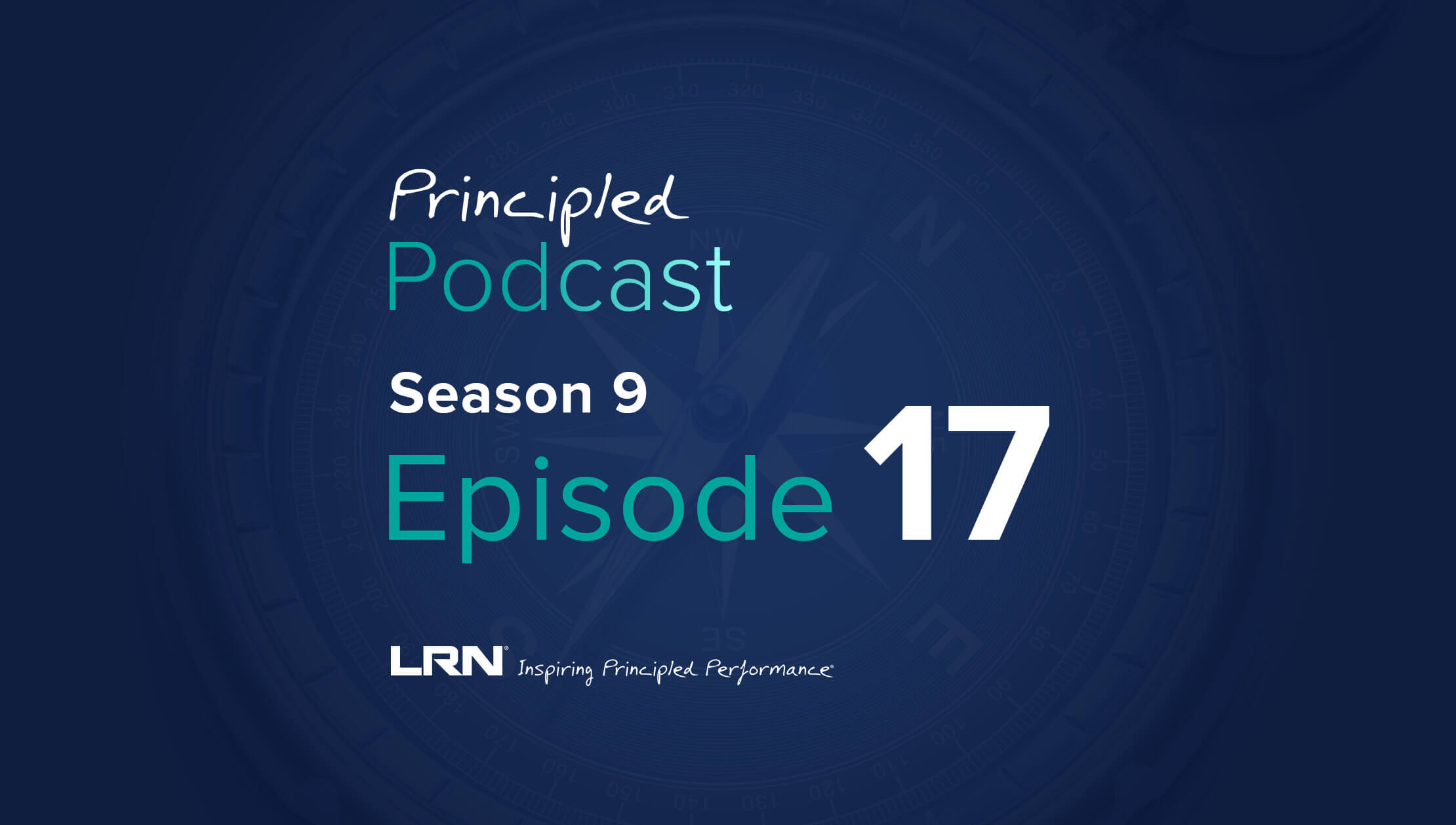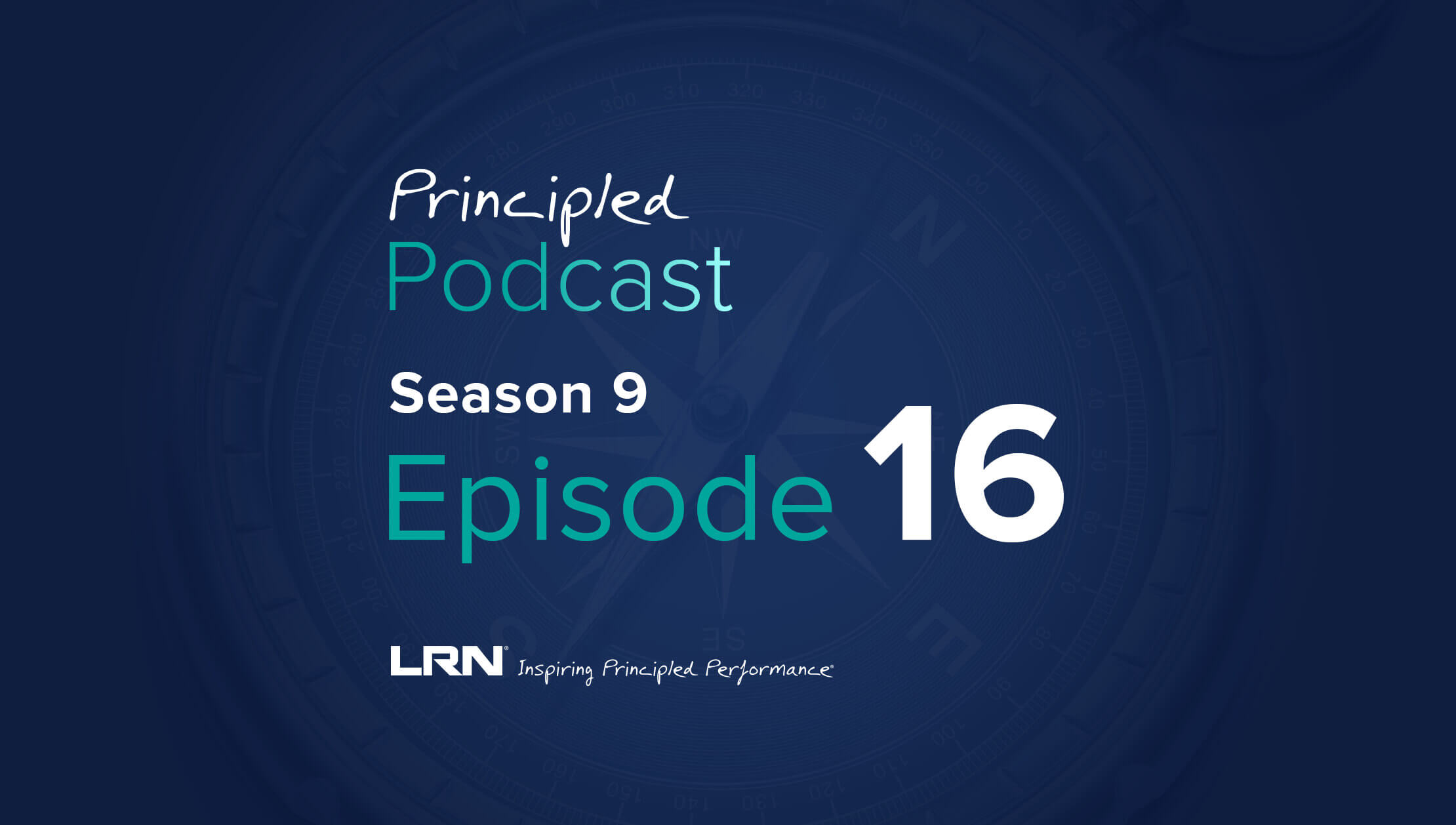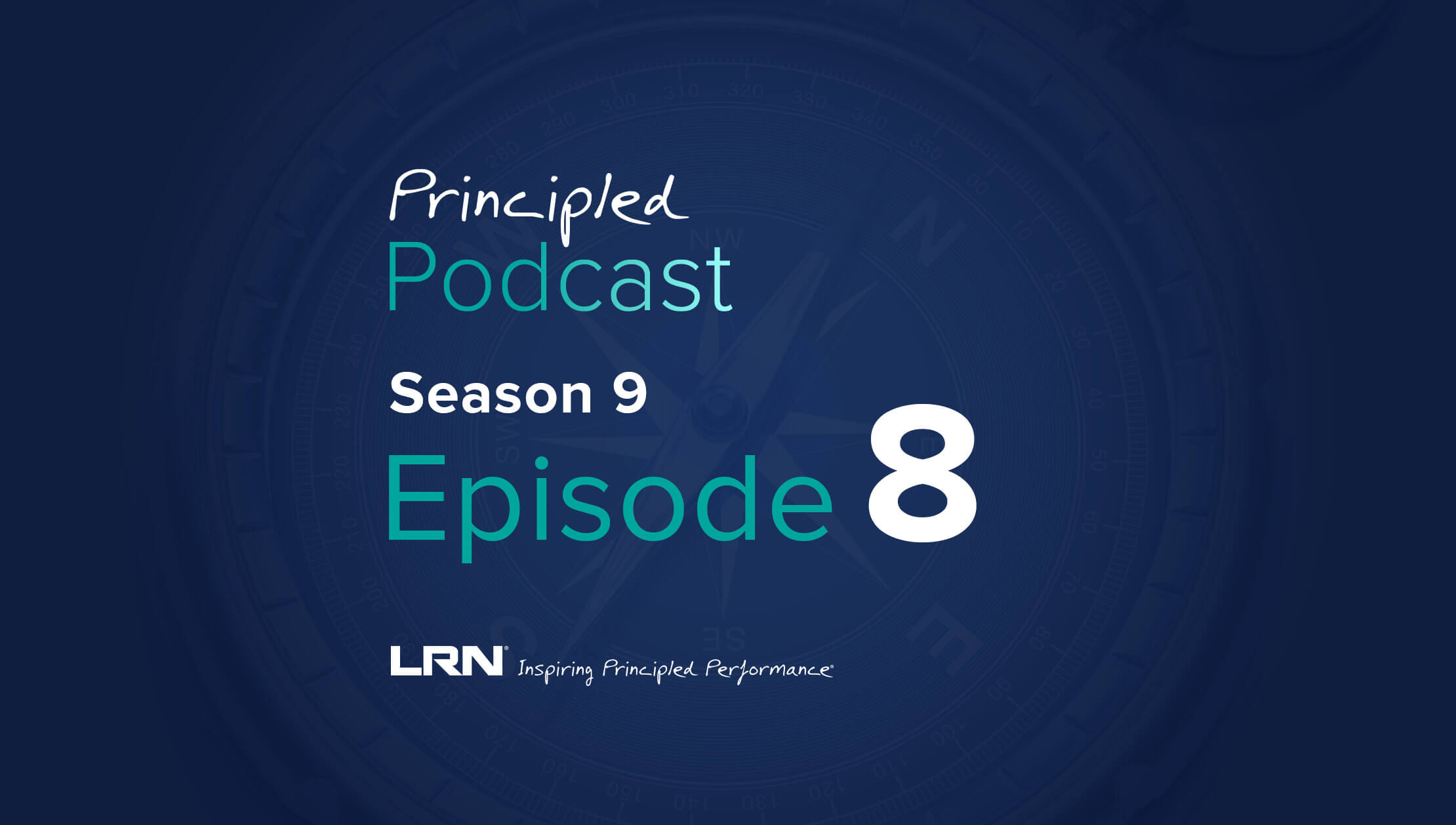This blog post is the fourth in LRN's “Strengthening the foundation” series, where we dive into research, best practices, and perspectives on building and maintaining ethical corporate culture at the employee, C-suite, and board levels. You can read the first three posts in the series here, here, and here.
As our world grapples with acknowledging systemic inequality, the impact of climate change, political unrest, and the ongoing COVID-19 pandemic, businesses are increasingly being asked and expected to be a positive force in the world. According to 2022 data, business is the most trusted institution, surpassing governments, media, and NGOs by a wide margin. At the same time, stakeholder expectations for ethical, prosocial, and sustainable actions have never been higher.
Companies that invest in ethical culture internally are more likely to deliver these principles externally. An ethical culture comprises solid ethical foundations (i.e., a clear code of conduct and a strong E&C program), leadership modeling, a healthy work atmosphere, and values-based performance.
Today, we will focus on leadership.
Leaders are key to creating a robust ethical culture. Successful leaders set the tone for their teams, make decisions on strategic initiatives, leverage values to guide action, and support their team members in achieving objectives. While the senior leadership team determines cultural and strategic goals, these goals must be cascaded to middle and frontline leaders and then to individual contributors. Collectively, every single employee can contribute positively to achieving business targets and upholding a strong corporate culture.
Nevertheless, not all workplaces are characterized by effective leadership modeling. Poor leadership results in employee confusion, frustration, resentment, and, eventually, resignation. In the last year, “uncaring and uninspiring leaders” ranked in the top three reasons why people are leaving their jobs. Despite these challenges, many leaders do not know or understand what leads to success or failure in this area. Leveraging data from our Benchmark of Ethical Culture, LRN shares new insights on how organizations can increase success in leadership modeling.
The top 5 predictors of leadership modeling
Through our research, we identified five key predictors of what makes for effective leadership modeling. They are:
- I trust my company’s leadership.
- If I raised a concern about unethical behavior to my manager, I’m confident they would handle it appropriately.
- Employees receive recognition when a job is well done.
- Important information about our company (e.g., strategy, goals, initiatives) is shared with all employees.
- I trust my manager.
What this means for becoming a better ethical leader
Collectively, these top predictors reveal common themes about what is important for enhancing leadership and strengthening ethical culture.
- Trust, trust, trust. The data reveal that employees must trust the company's senior leadership team and direct managers. Historically, managers and leaders could get away with leading without building trust- directives came from the top-down, and subordinates were supposed to follow orders without question. This is no longer the case. Today, leaders must explain why and how they make decisions, operate with empathy, and be authentic (read more here). These qualities enable two-way trust and support employees in feeling psychologically safe and empowered at work.
- Handle concerns about misconduct effectively. It is easy to be a leader in good times, but the true test of a leader is how they perform under pressure. To cultivate an ethical culture, leaders must know what constitutes unethical behavior and take decisive action when it occurs. Effective leadership modeling means communicating and modeling organizational values as well as speaking out and reporting misconduct when necessary. Ensuring that all people and the business are protected from harm is essential to maintaining a healthy workplace and reputation of integrity.
- Recognize employee efforts. Research suggests that when leaders consistently provide recognition, such as "thank you for your efforts," "I like how you completed XYZ," or even a high-five, this boosts morale and trust and reinforces that how a job is completed matters as much as the result. Increasing employee recognition for daily efforts on tasks and projects also strengthens ethical culture. Employee recognition is one of those areas where a little goes a long way. Yet, in LRN's Advisory practice, we often see that people are not receiving the recognition they desire in their roles. Influential leaders will take the time to pause and recognize employee efforts.
- Operate with transparency. Fostering a culture where employees are kept in the loop increases positive perceptions of leadership modeling. Transparency is enhanced by high levels of information-sharing, open-door meetings, frequent company-wide sessions to keep employees up-to-date, and channels where employees can provide feedback. When teams understand the company's strategic direction, and how this vision will be accomplished, they can better support these objectives. Additionally, these practices will enhance your people's sense of purpose and meaning. The best way for business leaders to make this shift is by building a workplace culture where open, transparent communication is expected at all levels.
The key takeaway
Cultivating leaders who are strong models of your values and ethical standards takes dedication, clear expectations, investment in leadership development, and accountability. Yet, leaders who model truth, compassion, recognition, and action-taking will be rewarded with innovative, connected, and loyal team members dedicated to the vision. This, in turn, will empower a stronger ethical culture and a world where we all thrive by acting on shared values.
To learn more, download a copy of the LRN Benchmark of Ethical Culture.



